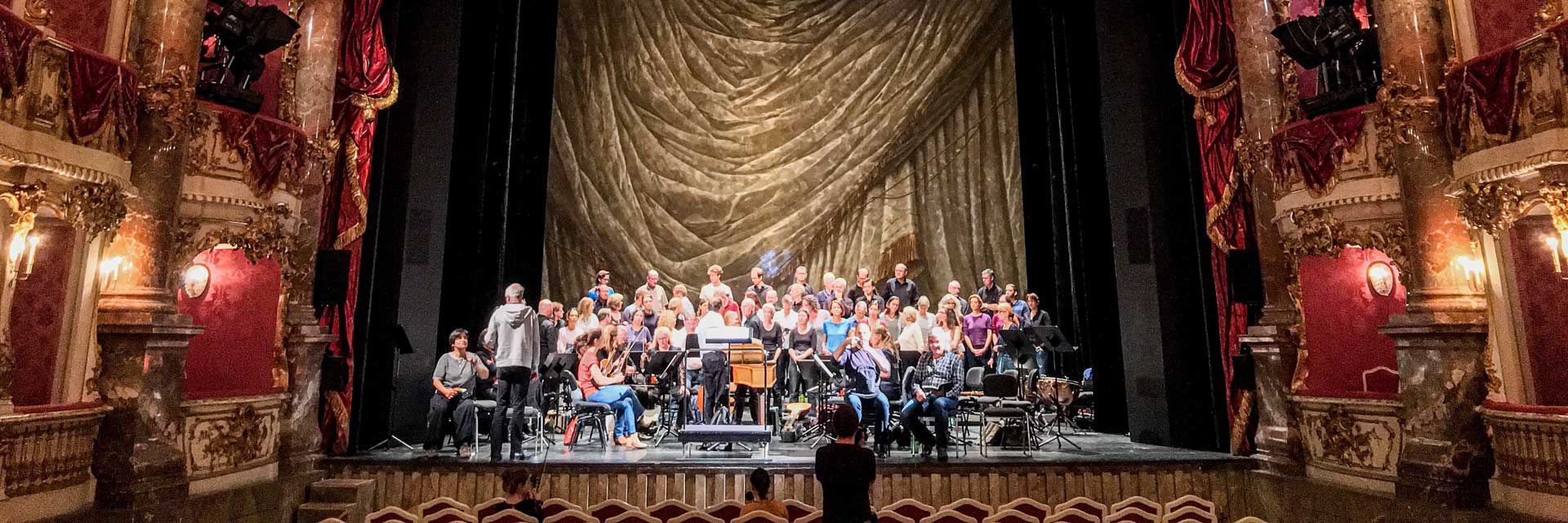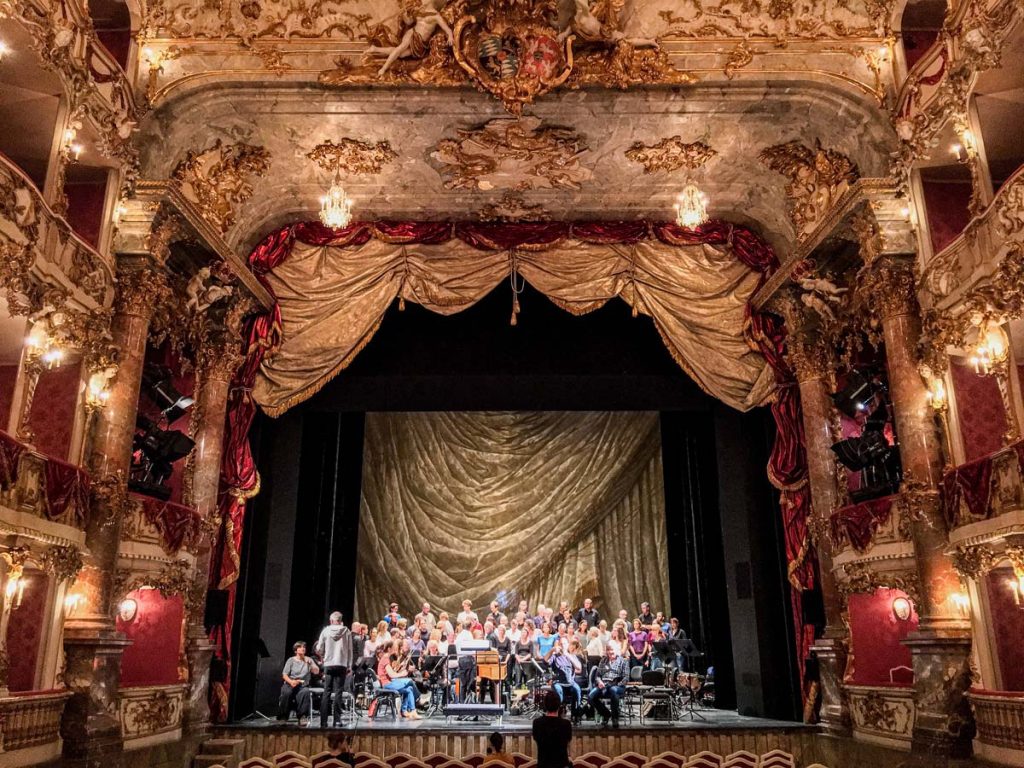All too often, it takes a shock to set great things in motion. In the case of the Cuvilliéstheater, this shock was the fire of the Munich Residenz in 1750 that, among other things, completely destroyed the court theater and necessitated the construction of a new building.
Very few of us are aware of the small stage called Cuvilliéstheater, which is now hidden in the so-called Apothekenstock of the Residenz. And yet it is worth taking a closer look at the eventful history of this house in order to appreciate its immense importance. And we should not be bothered by the fact that almost no recordings were made in this rather dry and difficult acoustic, apart from the recordings of the Bayerischer Rundfunk (you can find them in the station’s archives).
The year 1750 thus marks the zero hour. How important the theater obviously was to the reigning Elector Maximilian III Joseph can be seen from his quick reaction: Only four months after the fire, the foundation stone of the new theater was laid in the northeast of Max-Joseph-Platz (which was not yet called that at the time). François de Cuvilliés the Younger, among others, was commissioned. Two years later, the topping-out ceremony was celebrated, after which work began on the interior, which was made entirely of wood. According to the archives, no less than 1000 trees were felled in order to realize all the ideas. The interior designers dreamed big, because in addition to the stage machinery and thunderworks, which were already common at that time, they afforded extravagances such as an audience parquet that was variable in height.
The house was inaugurated, as was customary at the time, with a work by the current court composer, which did not pass the quality test of the time, however; this opera never found a place in the usual repertoire. Some time later, however, Idomeneo by the young Wolfgang Amadé Mozart was performed here – the first big name in a long series that was to follow.
An innovation of a completely different kind took place in 1795, when the house was opened to all citizens of the city, an downright monstrous event for those times.
Later, the house was closed for a few years, the interior furnishings were put into storage and the space was used as a warehouse for the much larger National Theater. After the reopening, the next caesura came only in 1943, when again all the fixtures were removed for protection from the bombing raids. This also made it possible to completely rebuild this theater after the war in another space, now in the Residence. This time it was inaugurated with Mozart’s Figaro conducted by Ferenc Fricsay.
For us musicians, the work in this house starts out arduous. Narrow and steep staircases, windowless dressing rooms, a constantly challenging parking situation, not to speak of the difficult acoustics on stage and in the pit.
And yet I would not want to miss the performances in this house, because like nowhere else, you perform old works here very much in the breath of their time of origin. The closeness to the audience, the abundance of beauty, the delight with which this architecture celebrates culture – all this creates special experiences with which the pragmatic modern halls often cannot compete.


